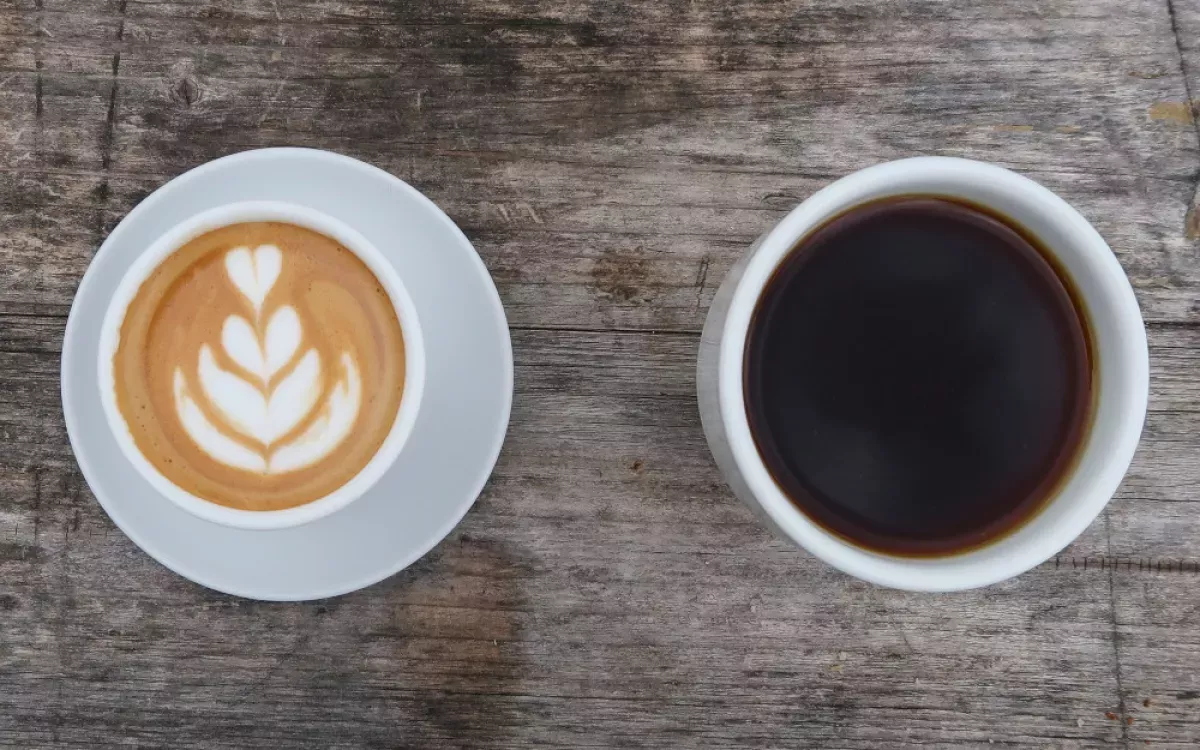Coffee is a globally popular beverage made from roasted and ground coffee beans. Known for its dark color, bitter taste, and slight acidity, coffee's stimulating effects are mainly attributed to its caffeine content, though decaffeinated versions are also available. As a hot drink, coffee boasts the highest sales in the world market.
1900: Robusta coffee conveyed from Congo Free State to Brussels to Java
Around 1900, the robusta strain was conveyed from the Congo Free State (now the Democratic Republic of the Congo) to Brussels to Java. From Java, further breeding resulted in the establishment of robusta plantations in many countries.
1900: Immigration Boosted by Coffee Production and Increase of production yield
In the early 1900s, coffee production attracted immigrants to Sao Paulo. São Paulo received approximately 733,000 immigrants in the decade preceding 1900.
1902: Increase of production yield
In 1902 São Paulo produced 8 million bags of coffee (60% of total production). Coffee is then 63% of the country's exports.
1910: Brazil's Coffee Export Dominance
Between 1910 and 1920, Brazil exported around 70% of the world's coffee.
1920: US becomes the largest coffee consumer
By 1920, around half of all coffee produced worldwide was consumed in the US.
1923: Coffee Certified Kosher for Passover
In 1923, contention among Ashkenazi Jews regarding the permissibility of coffee during Passover was resolved when coffee was certified kosher, making it acceptable for consumption during the holiday.
1930: First Written Account of "Cup of Joe" Origin Story
In 1930, the first written account appeared regarding the origin of the phrase "cup of Joe" for coffee, which, according to the story, originated when US Secretary of the Navy Josephus "Joe" Daniels banned alcohol on navy ships during World War I, leading sailors to refer to coffee as a "cup of Joe".
1931: Introduction of Vacuum-Sealed Coffee Cans
In 1931, a method of packing coffee in a sealed vacuum in cans was introduced, allowing the coffee to be stored indefinitely until the can was opened.
1947: Invention of the Coffee Vending Machine
In 1947 the coffee vending machine was invented and widely distributed since the 1950s.
1951: Coffee break written into union contracts
In 1951, Time noted that "[s]ince the war, the coffee break has been written into union contracts".
1952: Origin of the term 'coffee break'
In 1952, the term "coffee break" originated.
1952: Pan-American Coffee Bureau ad campaign of Coffee-Break
The term coffee break became common through a Pan-American Coffee Bureau ad campaign of 1952 which urged consumers, "Give yourself a Coffee-Break – and Get What Coffee Gives to You."
1970: Coffee as Second Most Valuable Commodity
From 1970 to approximately 2000, coffee was the second most valuable commodity exported by developing countries.
1979: Analysis of Caffeine Content in Coffee
According to a 1979 analysis, coffee has the following caffeine content, depending on how it is prepared.
1983: Origin of International Coffee Day
In 1983, International Coffee Day originated in Japan with an event organized by the All Japan Coffee Association.
1987: Foundation of the European Fair Trade Association
Since the founding of organizations such as the European Fair Trade Association in 1987, the production and consumption of fair trade coffee has grown.
1998: Coffee as Second Most Valuable Commodity
From 1970 to 1998 coffee was the second most valuable commodity exported by developing countries.
April 2000: Starbucks Introduces Fair Trade Coffee
In April 2000, after a year-long campaign by Global Exchange, Starbucks decided to carry fair-trade coffee in its stores.
2000: Coffee as Second Most Valuable Commodity
From 1970 to approximately 2000, coffee was the second most valuable commodity exported by developing countries.
2004: Fair Trade Coffee Statistics
In 2004, 24,222 metric tons of fair trade coffee were produced worldwide, out of a total production of 7,050,000 metric tons.
2004: Lower Coffee consumption in the U.S.
In 2004, fewer than half of U.S. adults reported coffee consumption in the past day.
2005: Study on Consumer Willingness to Pay for Ethical Products
A 2005 study done in Belgium concluded that consumers' buying behavior is not consistent with their positive attitude toward ethical products, particularly fair trade coffee.
2005: Fair Trade Coffee Statistics
In 2005, 33,991 metric tons of fair trade coffee were produced worldwide, out of a total production of 6,685,000 metric tons.
2007: Robusta Coffee Futures Trading on NY Intercontinental Exchange
Since 2007, futures contracts for robusta coffee have been traded on the New York Intercontinental Exchange.
September 2009: Starbucks UK and Ireland Use Fairtrade Certified Coffee
Since September 2009, all Starbucks Espresso beverages in UK and Ireland are made with Fairtrade and Shared Planet certified coffee.
2016: Sustainability Standards Compliance in Coffee Production
As of 2016, at least 34% of global coffee production was compliant with voluntary sustainability standards such as Fairtrade, UTZ, and 4C (The Common Code for the Coffee Community).
2017: Review of Clinical Trials on Coffee Consumption
A 2017 review of clinical trials found that drinking coffee is generally safe within usual levels of intake (3–4 cups daily) and is more likely to improve health outcomes than to cause harm. There are possible increased risk in women having bone fractures, and a possible increased risk in pregnant women of fetal loss or decreased birth weight.
2019: Brazil's Coffee Export Share
In 2019, Brazil was the largest coffee exporting nation, accounting for 15% of all world exports.
2021: Emergence of Synthetic Coffee Products
As of 2021, no synthetic coffee products are publicly available, but multiple bioeconomy companies have reportedly produced first batches that are highly similar on the molecular level and are close to commercialization.
2023: Global Coffee Industry Worth and Brazil's Leading Production
In 2023, the global coffee industry was worth $495.50 billion. Brazil led coffee bean production, accounting for 31% of the world's total, followed by Vietnam. Despite the industry's immense value, coffee farmers disproportionately face poverty, and environmental concerns persist regarding land clearing and water use.
April 2024: U.S. Coffee Consumption Reaches 20-Year High
In April 2024, a National Coffee Association survey indicated that coffee consumption in the U.S. reached a 20-year high, with 67% of U.S. adults reporting drinking coffee in the past day.
Mentioned in this timeline

Starbucks is an American multinational coffeehouse chain established in Seattle...
Colombia officially the Republic of Colombia is a country located...
Japan is an East Asian island country situated in the...

War is defined as an armed conflict involving the organized...
Haiti officially the Republic of Haiti is a Caribbean country...
Belgium officially the Kingdom of Belgium is a country in...
Trending

3 months ago Tereza Valentová Praised by Coco Gauff as a Potential WTA Tour Threat

1 month ago Housing Crisis: Americans Face Trade-off Between Affordability and Safety Amidst Rising Prices.

3 months ago ATP Basel Day 2 Predictions: Wawrinka vs Kecmanovic, Mpetshi Perricard vs Fonseca
7 months ago Popyrin Faces Draper at Queen's Club Amidst Murray Flashbacks and Tournament Predictions.

Tim Walz is an American politician educator and Army National Guard veteran currently serving as the st Governor of Minnesota...
2 months ago Blinkova and Salkova to face off at the 2025 Jiangxi Open.
Popular

Stranger Things created by the Duffer Brothers is a popular...

XXXTentacion born Jahseh Dwayne Ricardo Onfroy was a controversial yet...

Kelsey Grammer is an accomplished American actor producer and singer...

Candace Owens is an American conservative political commentator and author...

Bernie Sanders is a prominent American politician currently serving as...

Melania Trump a Slovenian-American former model has served as First...
